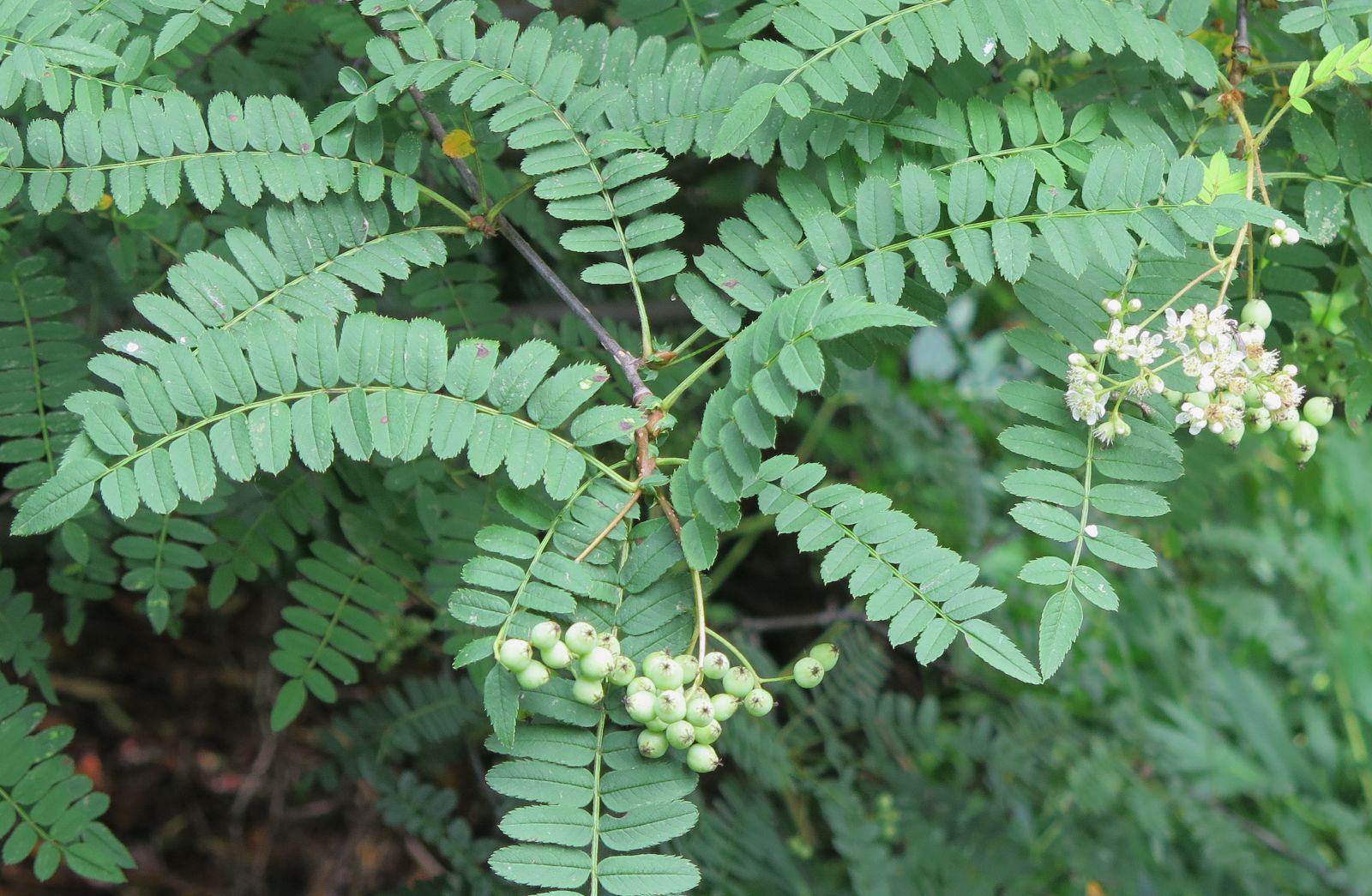Sorbus prattii
Sponsor
Kindly sponsored by
This genus has been sponsored and new text is being prepared.
Credits
Article from Bean's Trees and Shrubs Hardy in the British Isles
Recommended citation
'Sorbus prattii' from the website Trees and Shrubs Online (treesandshrubsonline.
Genus
Synonyms
- S. pogonopetala Koehne
- S. munda Koehne
- S. munda f. tatsienensis and f. subarachnoidea Koehne
- S. pratti var. tatsienensis (Koehne) Schneid.
- S. prattii f. subarachnoidea (Koehne) Rehd.
Other taxa in genus
- Sorbus americana
- Sorbus amoena
- Sorbus arachnoidea
- Sorbus aucuparia
- Sorbus carmesina
- Sorbus cashmiriana
- Sorbus commixta
- Sorbus coxii
- Sorbus decora
- Sorbus discolor
- Sorbus ellipsoidalis
- Sorbus esserteauiana
- Sorbus fansipanensis
- Sorbus foliolosa
- Sorbus forrestii
- Sorbus glabriuscula
- Sorbus glomerulata
- Sorbus gracilis
- Sorbus helenae
- Sorbus hupehensis
- Sorbus hypoglauca
- Sorbus insignis
- Sorbus 'Joseph Rock'
- Sorbus khumbuensis
- Sorbus koehneana
- Sorbus kongboensis
- Sorbus kurzii
- Sorbus lingshiensis
- Sorbus matsumurana
- Sorbus microphylla
- Sorbus muliensis
- Sorbus olivacea
- Sorbus parvifructa
- Sorbus pohuashanensis
- Sorbus poteriifolia
- Sorbus pseudohupehensis
- Sorbus pseudovilmorinii
- Sorbus randaiensis
- Sorbus reducta
- Sorbus rinzenii
- Sorbus rubescens
- Sorbus rufopilosa
- Sorbus rushforthii
- Sorbus sambucifolia
- Sorbus sargentiana
- Sorbus scalaris
- Sorbus sitchensis
- Sorbus tianschanica
- Sorbus ursina
- Sorbus vilmorinii
- Sorbus wallichii
- Sorbus wilsoniana
A tree up to 20 ft high; winter-buds 1⁄4 to 3⁄8 in. long, they and the young shoots clad with long rusty hairs. Leaves 33⁄4 to 51⁄2 in. long, including petiole, with ten to fourteen pairs of leaflets; rachis grooved, slightly winged towards the apex of the leaf, covered beneath with a loose tomentum of pale brown, cottony hairs. Leaflets mostly 5⁄8 to 3⁄4 in. long, 1⁄4 to 5⁄16 in. wide, the lateral leaflets rounded to subacute at the apex, rounded at the base, medium green above, underside rather glaucous, cobwebby on the blade and with a tomentose midrib, later nearly glabrous, margins rather deeply toothed. Inflorescence long-pedunculate, lax, sparsely hairy to almost glabrous. Flowers white, about 3⁄8 in. wide; receptacle campanulate, the calyx-lobes broadly deltoid, short, rather thick, with an apiculate apex. Petals obovate to orbicular, slightly hairy inside at the base. Styles five. Fruits globose, about 3⁄8 in. wide, green when immature, becoming pearly white. Bot. Mag., t. 9460.
Native of W. Szechwan and E. Kansu, perhaps also of N.W. Yunnan. It varies slightly in the size and number of its leaflets and the degree of their hairiness, but the varieties and independent species made out of these variations are not marked enough to merit recognition. S. prattii was introduced by Wilson in 1910 during his second expedition for the Arnold Arboretum (W. 4323). F.R.S. Balfour of Dawyck, who organised the British contribution to the financing of this expedition, gave most of his share of the seeds to Harry White of the Sunningdale Nurseries, and plants were also distributed by Vicary Gibbs of Aldenham, where S. prattii fruited in 1922. The description above is based on material from a plant at Dawyck, figured in the Botanical Magazine.
S. prattii makes an attractive small tree or large shrub, differing most obviously from S. vilmorinii in its pure white fruits, which do not go through a pink phase. The flowers open in May and the fruits are usually white by September. The cultivar-name ‘Aeolus’ has been given to a plant at Kew, which received an Award of Merit for its fruits in 1971. It does not differ significantly from the plant described above.


